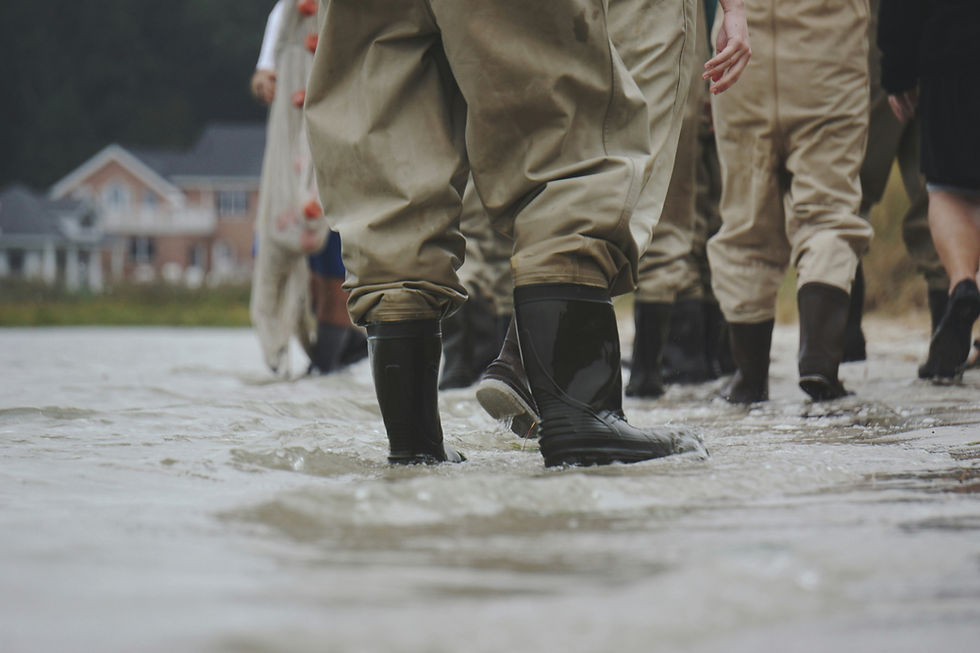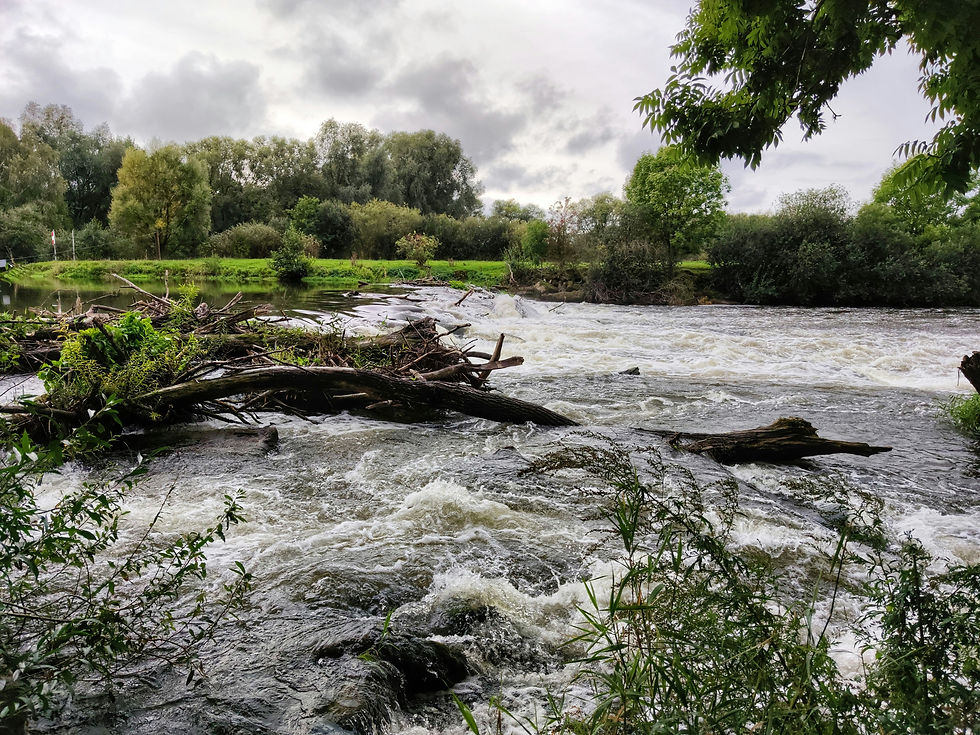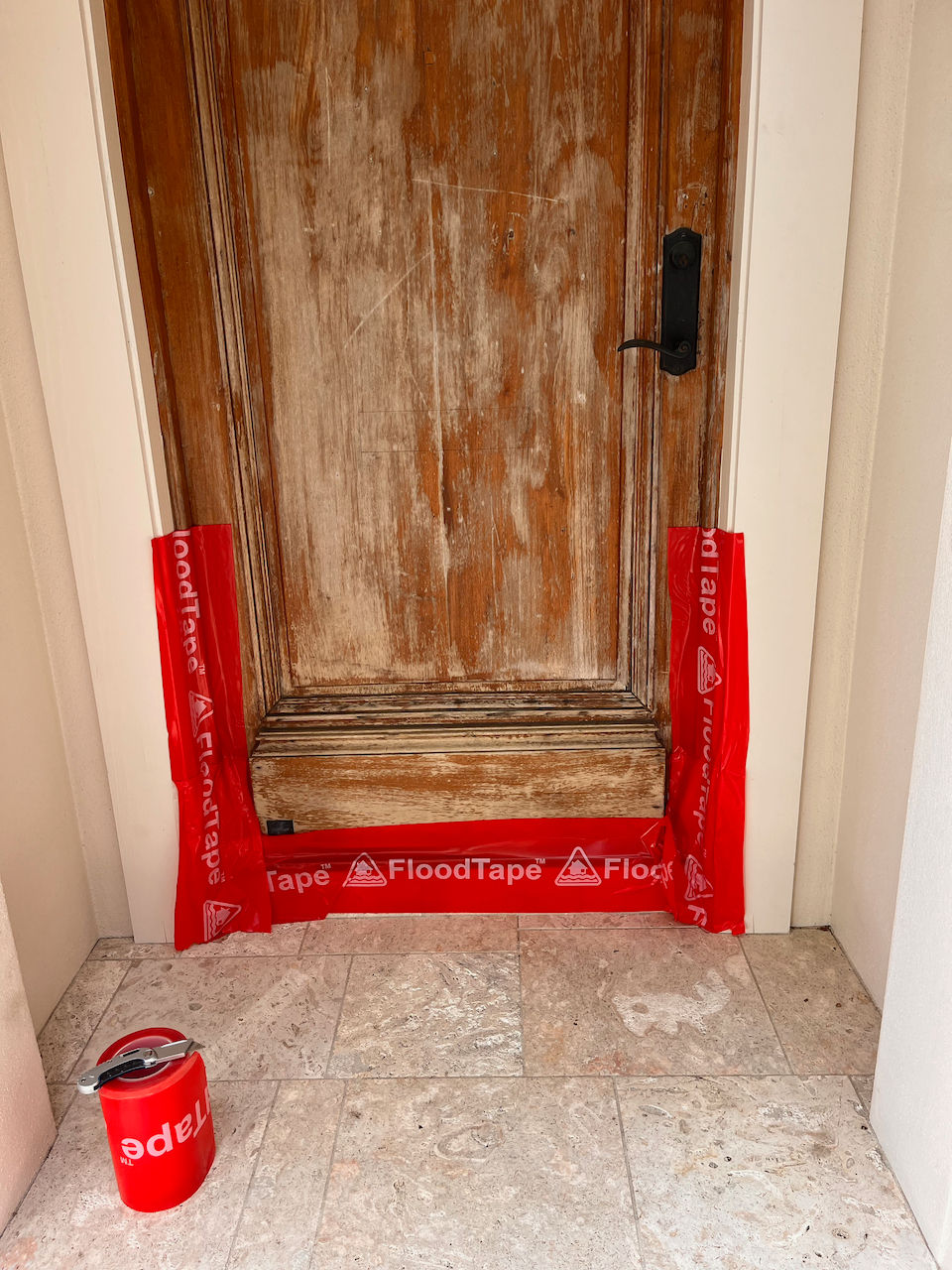Is My House in a Flood Zone?
- Matthias Herzog

- Jul 29
- 3 min read
The Highest Flood Risk Areas in Each State
Floods are the most common and costly natural disaster affecting Americans. While hurricanes, tornadoes, earthquakes, and fires make national headlines, 90% of natural disasters in the U.S. involve flooding. Even homes outside of “high-risk” zones experience flood damage every year.
If you’ve ever asked yourself: “Is my house in a flood zone?”, you’ve come to the right place. As extreme weather becomes more unpredictable, preparation is key. That’s where FloodTape® comes in: a modern flood barrier system designed to protect what matters most before the water rises.

What Is a Flood Zone?
A flood zone is a geographic area defined by FEMA (Federal Emergency Management Agency) that reflects the level of flood risk. These zones are used to determine insurance requirements, building codes, and emergency response plans.
Flood zones are categorized by risk:
High-risk areas (e.g., Zones AE, VE): Have a 1% chance of flooding in any given year (also called the “100-year flood zone”).
Moderate-to-low risk areas (Zone X): Still experience floods, but with lower statistical likelihood.
Undetermined risk areas (Zone D): No official analysis has been conducted yet.
It’s worth noting: flooding can and does occur outside of FEMA-designated zones. The true benefit of Zone X or Zone D is not a lack of flooding possibility, but the lower insurance rates that homeowners will likely pay there.
How to Check If Your Home Is in a Flood Zone
It only takes a few minutes to determine your property’s flood risk. Here's how:
Visit FEMA’s Flood Map Service Center: https://msc.fema.gov/portal/home
Enter your address.
Click “View Map” to see your zone classification.
Look for labels like AE, VE, or X to identify your level of risk.
Many county websites also offer interactive flood maps that provide additional local details. Keep in mind that flood zones can change over time, especially in areas experiencing rapid development or climate shifts. It is a smart idea to check the flood maps for updates whenever you restock your emergency preparedness kit.

Why Flood Zones Matter More Than Ever
Flood zones are no longer just a coastal concern. Climate change, aging infrastructure, and urban sprawl are causing more inland areas to experience severe flooding. Even neighborhoods once considered “low risk” are seeing rising insurance rates and recurring stormwater issues.
Real-world example? In recent years, Houston, TX experienced multiple 500-year floods (events that statistically should only occur once every 500 years) within three years.
The Highest Flood Risk Areas in Each State
Want to know where your state ranks? Below is a breakdown of the most flood-prone areas by region:
Northeast
New Jersey: Hoboken, Atlantic City
New York: Long Island’s South Shore, lower Manhattan
Massachusetts: Boston Seaport, Cape Cod
Southeast
Florida: Miami, Tampa Bay, Jacksonville
Louisiana: New Orleans, Baton Rouge
South Carolina: Charleston, Hilton Head
Midwest
Illinois: Des Plaines River basin, Chicago suburbs
Missouri: St. Louis (Mississippi River levees)
Ohio: Cincinnati riverfront neighborhoods
Southwest
Texas: Houston, Galveston, Austin flood plains
Arizona: Phoenix (flash flood zones)
New Mexico: Albuquerque arroyos and drainage channels
West
California: Sacramento Valley, San Francisco Bay shorelines
Washington: Seattle’s waterfront, Skagit County
Oregon: Portland’s Willamette River corridor
Mountain & Plains States
Colorado: Boulder and foothill communities
Oklahoma: Tulsa, Oklahoma City
Kansas: Wichita, Great Plains runoff zones
Alaska & Hawaii
Alaska: Anchorage coastlines, Juneau river areas
Hawaii: Honolulu, Hilo (tropical storm and tsunami risk)
Even if your city isn’t listed here, your specific property may still be vulnerable. Flood risk varies block-to-block and sometimes even within a single neighborhood.

What to Do If You Live in a Flood Zone
If your property is located in or near a high-risk flood zone, don’t panic: prepare. Here’s how to minimize damage and protect your investment:
Elevate utilities: Move electrical panels, heating systems, and water heaters above base flood elevation.
Create a flood plan: Know your evacuation routes and keep emergency supplies on hand.
Install barriers: Use flood shields or barriers at entry points. And don’t forget the easiest defense: FloodTape® is a waterproof sealing tape designed specifically to keep floodwater from entering through doors, garages, and seams. It’s an essential part of any hurricane or flood preparedness kit and easier to apply than sandbags.
Stay Dry, Stay Safe
Floods can strike unexpectedly. But with the right information you can stay one step ahead. Find out your flood risk today, and make sure FloodTape® is part of your plan.




Comments